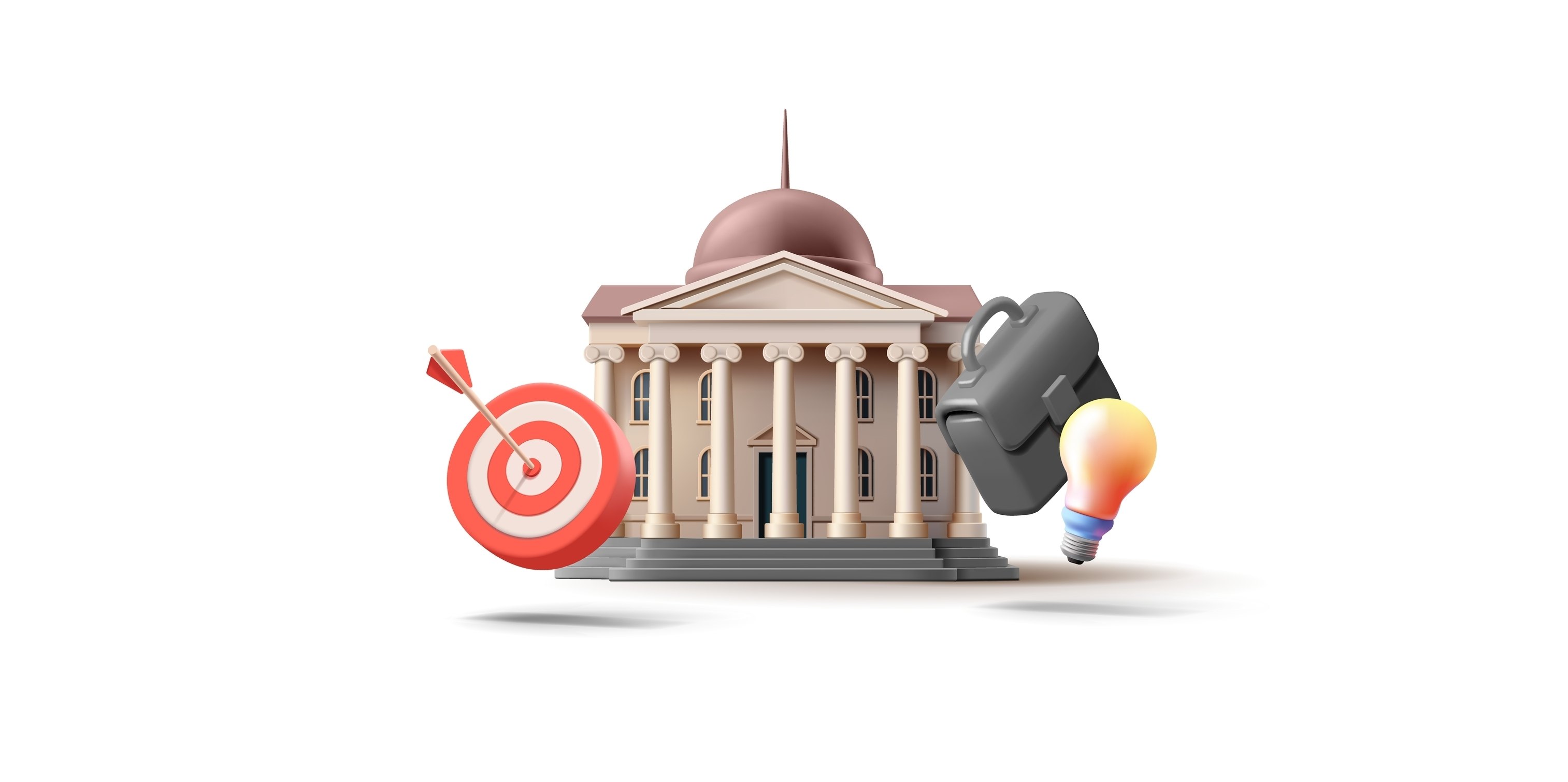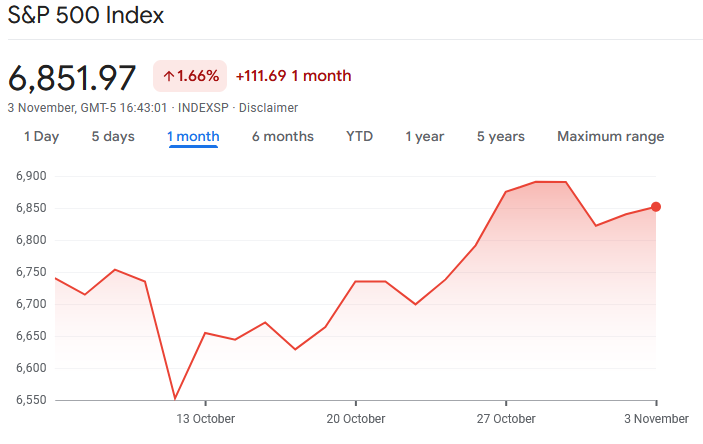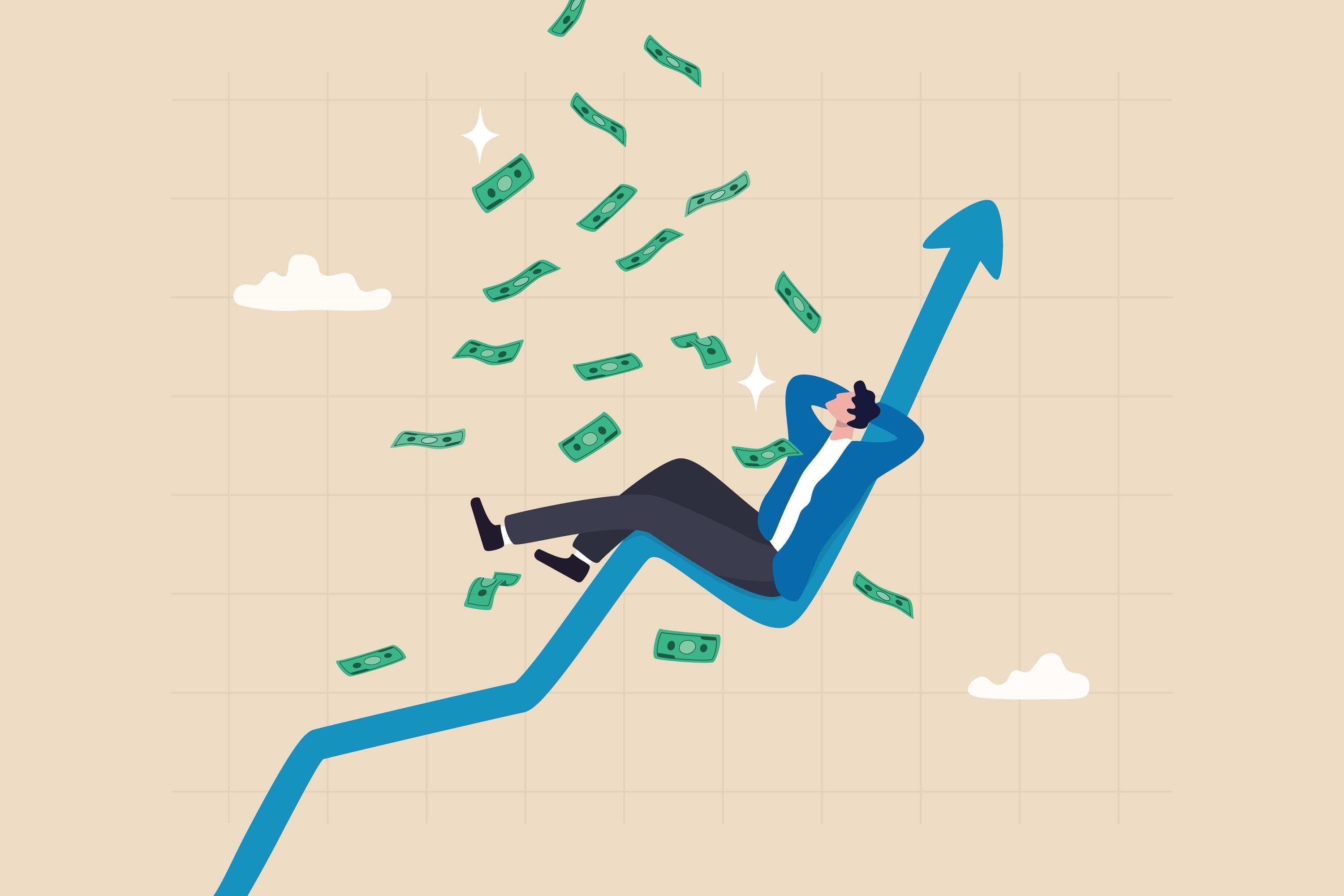TradingKey - The U.S. federal government is now in its 34th day of a shutdown, and this budget standoff is on the verge of becoming the longest in history.
The Senate has held multiple emergency sessions over the past few weeks, yet partisan divisions over healthcare funding remain unresolved. With each failed vote, this shutdown is inching closer to becoming the longest in modern history, just one day shy of surpassing the 35-day record set during the Trump administration in 2018–2019.
The disruption to public services and the hardship faced by federal employees have naturally dominated media coverage and captured public attention. Investors are understandably concerned about how this political turmoil might affect their retirement accounts or hard-earned savings. Such worries are entirely reasonable—after all, when the government “shuts down,” uncertainty about the economic outlook seems to rise.
But historical data offers a different perspective. According to an analysis of the past four decades, during the 18 government shutdowns that have occurred, the S&P 500 delivered positive returns within 60 days after the shutdown ended in 14 instances, with an average gain of 3.2%.

(Source: Shutterstock)
What Is a Government Shutdown?
A government shutdown occurs when Congress fails to pass the necessary appropriations bills by the start of the new fiscal year, forcing the federal government to suspend non-essential operations. Since the modern budget process was established in 1976, the U.S. has experienced 21 such shutdowns. While the 2018–2019 shutdown lasted 34 days and set a record, most have lasted only a few days.
A government shutdown does not mean the entire country “shuts down.”
Each federal agency implements contingency plans that distinguish between “essential” and “non-essential” functions. National parks may close, museums may halt operations, passport processing may be delayed, and the release of economic data may pause. However, critical services such as air traffic control, national defense, and social benefit payments continue to operate.
For most individuals, the impact is limited unless you are a federal employee or directly reliant on government services. For the roughly 2 million federal workers, however, a shutdown brings uncertainty: essential personnel must work without pay, while non-essential staff are placed on furlough. These households face immediate cash flow challenges until Congress reaches an agreement and back pay is issued.
Has This Government Shutdown Affected Your Investment Portfolio?
While the government shutdown has significantly impacted federal employees and public services, historical data shows it rarely causes lasting harm to the broader economy or financial markets.
Looking back over the past month, the S&P 500 has still gained nearly 2% despite the ongoing shutdown, and the Nasdaq Composite has risen by more than 4%.

(Source: Google Finance)
This performance is not a sign of blind optimism, but rather a rational response based on historical experience. As many market analysts have pointed out, seasoned investors understand that while short-lived political turmoil may dominate headlines, it seldom has a meaningful impact on companies’ core earnings power or their ability to create long-term value.
Markets remain focused on the true long-term drivers of stock prices—earnings quality, economic growth trends, and the interest rate environment—not temporary political noise.
The current interest rate environment is especially favorable for you. The Federal Reserve’s rate cuts are providing support to the market. Lower borrowing costs not only encourage business expansion and profit growth but also ease the debt burden on individual consumers. At the same time, the temporary slowdown in federal spending during the shutdown has unexpectedly helped ease some inflationary pressures, supporting bond prices and giving a boost to interest-rate-sensitive sectors such as housing and technology.
Of course, the shutdown may delay the release of certain economic data, leading to brief inefficiencies in market pricing.
Some analysts also caution that if the government shutdown were to persist for an extended period, the underlying fragility of the U.S. economy could heighten risks for investors.
Bret Kenwell, investment analyst at eToro, noted that, after all, no one dislikes uncertainty more than the market.
What Has the S&P 500 Done During Past Shutdowns?
At the end of the 16-day government shutdown in 2013, the S&P 500 actually rose by 3.1%. And during the record-breaking 35-day shutdown of 2018–2019, the stock market staged a strong rebound from a prior 20% decline.
Despite short-term volatility, most shutdowns since 1990 have actually coincided with positive market returns.
Start Date | End Date | Days | S&P 500 Index Price Return (%) |
10/1/1976 | 10/11/1976 | 10 | -3.42 |
10/1/1977 | 10/13/1977 | 12 | -3.18 |
11/1/1977 | 11/9/1977 | 8 | 0.69 |
12/1/1977 | 12/9/1977 | 8 | -1.24 |
10/1/1978 | 10/18/1978 | 17 | -2.00 |
10/1/1979 | 10/12/1979 | 11 | -4.42 |
11/14/1995 | 11/19/1995 | 5 | 1.31 |
12/16/1995 | 1/6/1996 | 21 | 0.06 |
10/1/2013 | 10/17/2013 | 16 | 3.07 |
12/22/2018 | 1/25/2019 | 35 | 10.27 |
Is the Credit Rating Worth Watching?
For investors, what matters more than short-term market volatility is the potential long-term impact of government shutdowns on America’s credit rating. While stock markets often rebound quickly after a shutdown ends, rating agencies are growing increasingly impatient with political instability.
Earlier this year, Moody’s downgraded the U.S. sovereign credit rating from AAA, and both Standard & Poor’s and Fitch have adopted a more cautious stance in their assessments.
This shift won’t immediately affect your portfolio, but its long-term implications are significant. A credit rating downgrade typically leads to higher U.S. Treasury yields, which in turn push up interest rates across the broader market.
For you—as an investor holding long-duration bonds, mortgages, or high-dividend stocks—changes in the interest rate environment can have a meaningful impact. Rising Treasury yields pressure the prices of longer-duration bonds, and higher borrowing costs can dampen corporate earnings growth, particularly in rate-sensitive sectors such as real estate and utilities.
How Should Investors Respond?
Does this mean you should adjust your portfolio? Research shows that during historical government shutdowns, investors with globally diversified allocations generally fared better.
One key trend in today’s market is the strong performance of assets outside the United States.
As of the end of the third quarter, while the S&P 500 delivered a solid 14.8% return, international markets outperformed significantly: developed non-U.S. markets rose 26.6%, and emerging markets surged 28.2%. Notably, Germany (33.6%), China (41.9%), and Brazil (40.4%) posted especially strong gains. At the same time, the U.S. dollar has depreciated by nearly 10% against major currencies, further boosting returns for international investments.
The current government shutdown and shifting trade policies underscore the value of global diversification. By strategically allocating across major global asset classes, you can not only mitigate risks tied to the U.S. domestic economy but also effectively hedge against the impact of a weakening dollar.

(Source: Shutterstock)
We also recommend reviewing the proportion of rate-sensitive assets in your portfolio and considering increasing allocations to short-term bonds, Treasury Inflation-Protected Securities (TIPS), and non-U.S. dollar-denominated assets. Additionally, maintaining a cash reserve covering 12 to 18 months of living expenses can help you avoid being forced to sell investments at unfavorable prices during periods of market stress.
Our core advice to you remains unchanged: maintain a thoughtfully constructed, broadly diversified, and low-cost investment portfolio.
As an investor, it’s essential to keep focus on the big picture.
True financial resilience doesn’t come from predicting political events, but from building an asset allocation that can withstand a wide range of economic environments. When markets are clouded by short-term noise, remember that the most dangerous investment decisions are often driven by emotion—not long-term planning.


